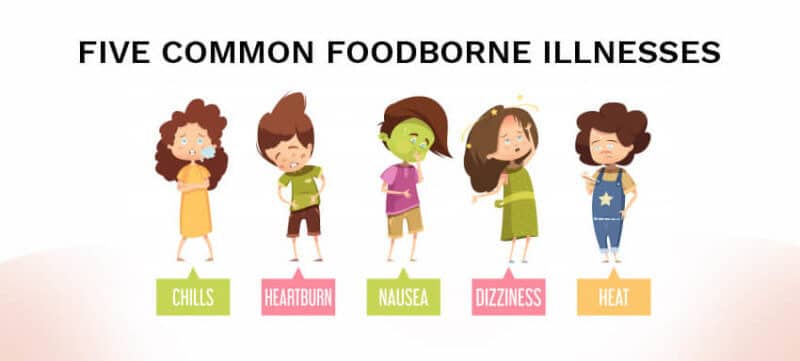
Anyone working in the restaurant and hospitality industry knows that preparing, serving, or handling food is one of the most challenging tasks. You work with food that needs to be served at a specific temperature to maintain the taste and give a unique palette-teasing experience without making the customer wait for long. Additionally, you need to take special precautions while handling food, such as
Food poisoning is one of the most common ailments caused by improper food handling, and food-related ailments affect approximately 48 million Americans every year. While many pathogens cause different forms of food-related disorders, there are five common foodborne illnesses caused by improper food handling (and steps to avoid the infection) that we shall cover in this informative article.
The overall cause for foodborne illnesses can be divided into two major categories:
Biological contamination occurs when pathogens such as bacteria, viruses, or parasites enter the food and begin multiplying. The contamination may be present from the beginning (animal carrying virus at the time of death) or introduced during food handling (a food handler transferring it from unwashed hands)
Chemical contamination occurs when the food is left out for long periods where it undergoes chemical changes or toxins are introduced into the food from poor food handling practices. Moreover, the allergens’ presence is also chemical contamination, i.e., when the food is prepared without considering the allergen sensitivity of the customer. Chemical contamination is generally seen in seafood or food prepared using preservatives.
One of the most lethal pathogens, Salmonella causes 1.2 million illnesses and close to 450 deaths each year (Source). This bacteria can easily contaminate any food and generally spreads from drippings from raw meat or poultry that remain on the kitchen surface if not cleaned properly. Salmonella quickly spreads among animals from contact, and unwashed/ unclean hands can spread it inside the kitchen.
Symptoms from Salmonella poisoning start within 12 to 72 hours of infection and vary from fever, abdominal cramps, severe diarrhea, and vomiting that lasts for four to seven days. The symptoms can become severe in children, older adults, and need serious treatment or even hospitalization. Treatment generally involves taking antibiotics and fluids to counter dehydration.
The common cause of Stomach flu is the presence of norovirus in your food. Generally found in oysters and other shellfish, the chances of contamination are very high for norovirus. It can be spread from infected people to other people or from cross-contamination of food or drinks. What makes Norovirus a dangerous pathogen is that it is resistant to freezing and hot temperatures and most disinfectants with chlorine or alcohol.
Symptoms show up 12 to 48 hours and include stomach pain, nausea, vomiting, diarrhea with symptoms such as fever, headache, and body aches in the lower level. Norovirus infection lasts up to 3 days.
Recommended: FOOD SAFETY ALERT
Eating undercooked poultry is a sure shot way to have Campylobacter enter your systems. It is bacteria responsible for causing Guillian-Barre syndrome, a potentially devastating neurologic disorder in one out of 1000 cases. This can easily spread from raw or undercooked poultry as well as from unpasteurized milk. Symptoms such as cramping, abdominal pain, fever, and diarrhea (bloody sometimes) can last up to two to five days after infection.
Any food that comes in contact with the bacteria is also infected. It cannot survive in temperatures exceeding 165oF, so always use a meat thermometer to ensure the internal temperature of the poultry is >165oF.
A harmless strain of this virus is present in the intestines of humans and animals, but when E. coli infects any food, you are in a painful experience with a risk of kidney failure. Out of the different strains of E. coli, the Shiga Toxin producing E. coli is spread from undercooked ground beef, unpasteurized milk products, and fruits or vegetables infected with it.
Symptoms of E. coli infection can be stomach cramps, diarrhea, and vomiting, with a chance of kidney failure in extreme cases. Recovery from E. coli infection can take up to eight days.
With almost 1 million cases in the U.S yearly, Clostridium perfringens bacteria is the most common food poisoning pathogen. They thrive in the temperature range of 40 to 140oF, so they can be easily spread when food is prepared in large quantities and kept warm for long periods before serving. Hence, people eating at buffets and catered events are prone to this infection if the food is not handled correctly.
Symptoms can surface within eight to 12 hours after infection, can include Diarrhea and abdominal cramps leading to dehydration, and last less than 24 hours.
Food handling is the utmost important factor in the catering business. Hence most tend to follow the below mentioned best practices when it comes to food handling: